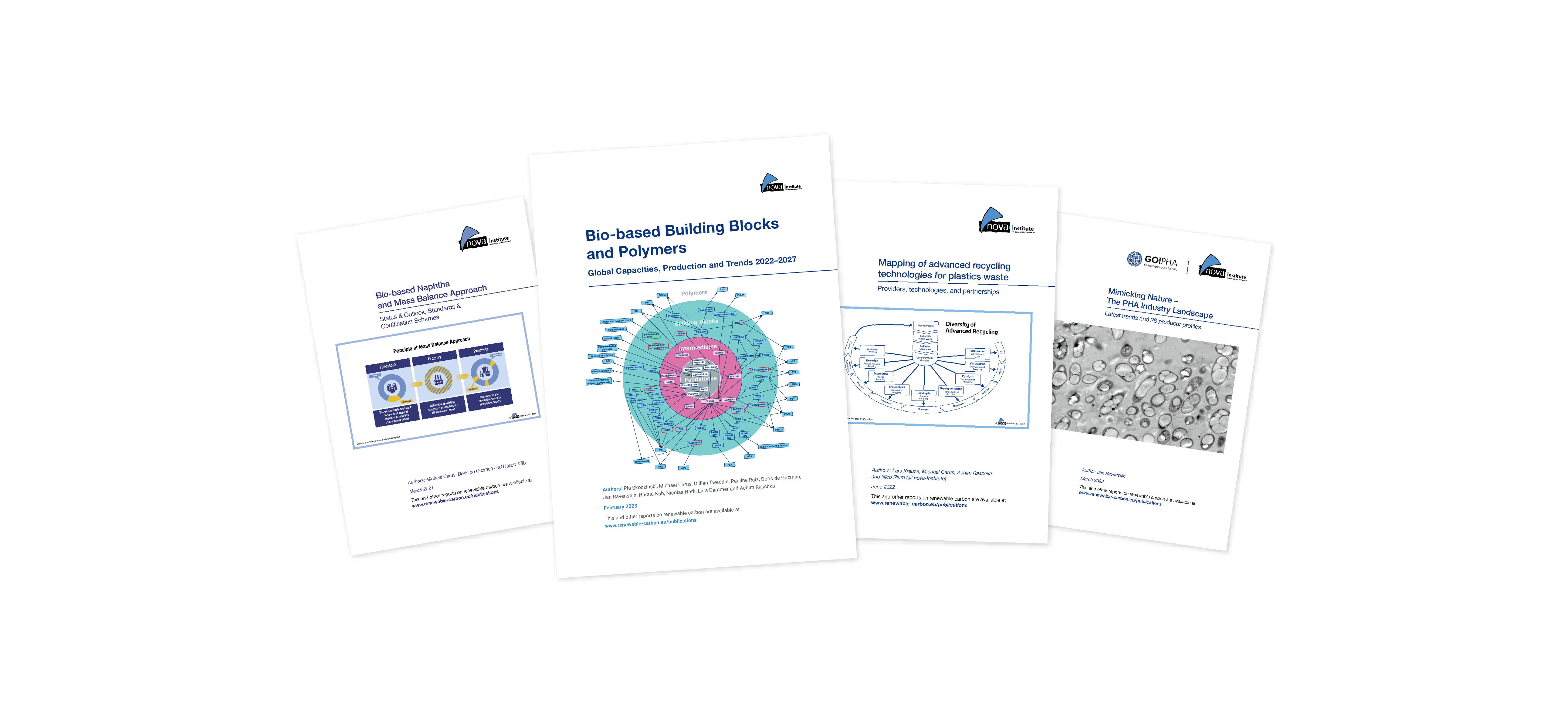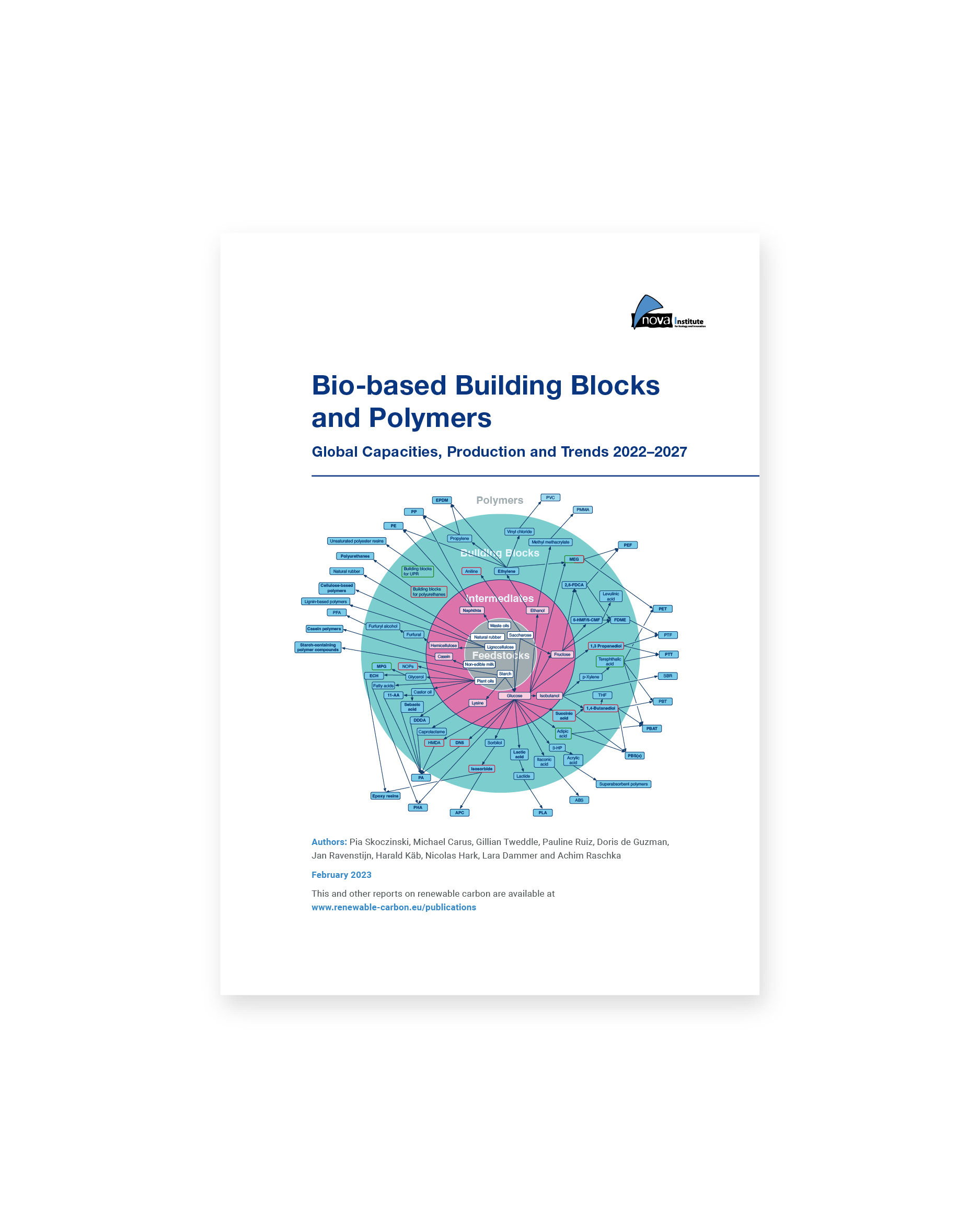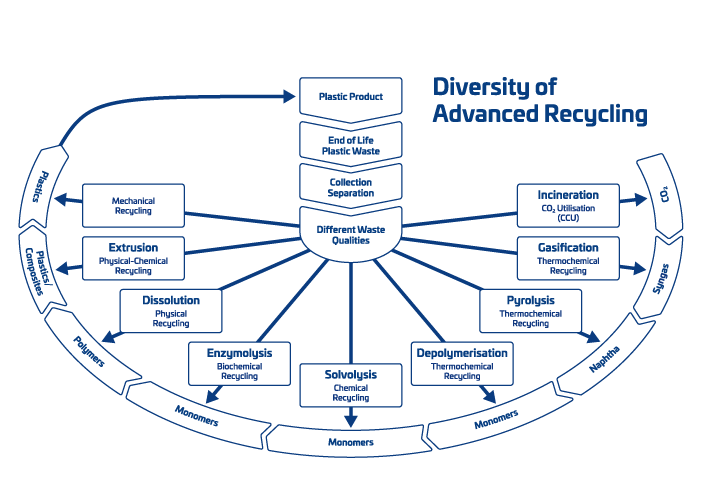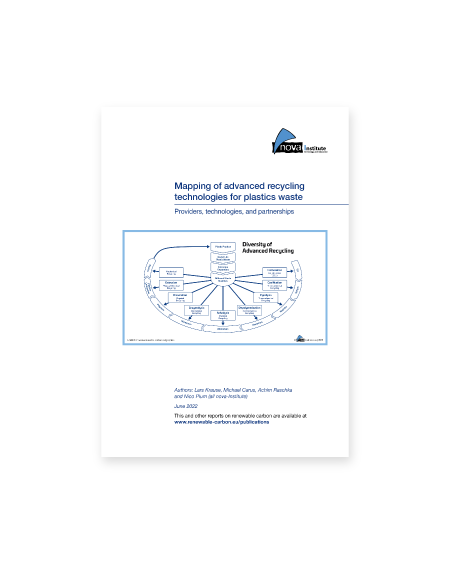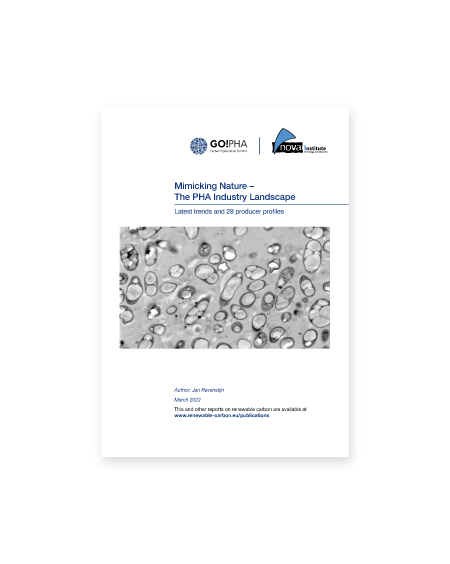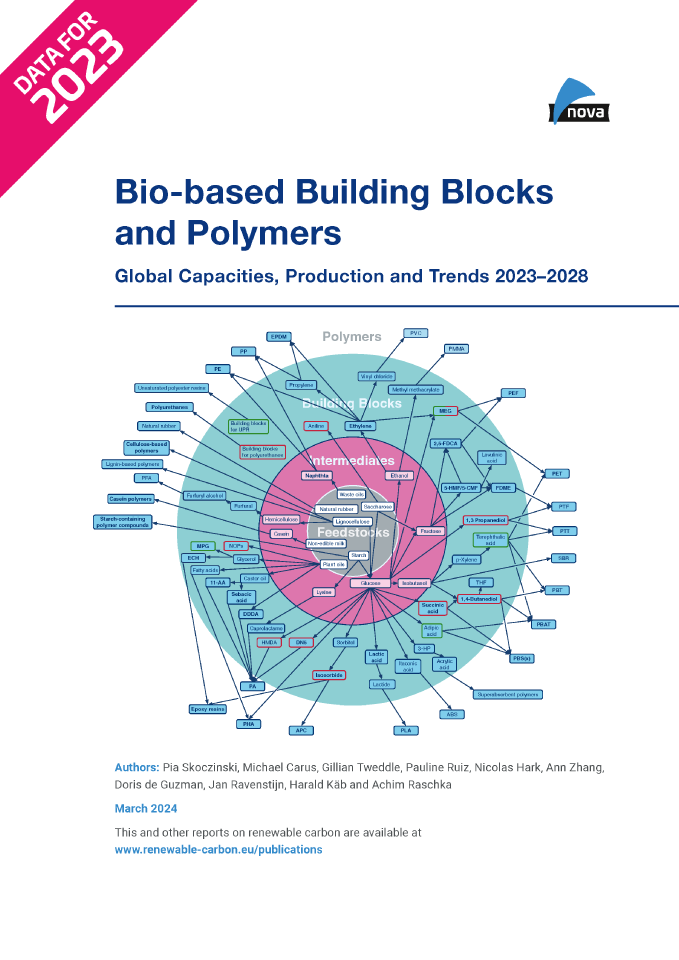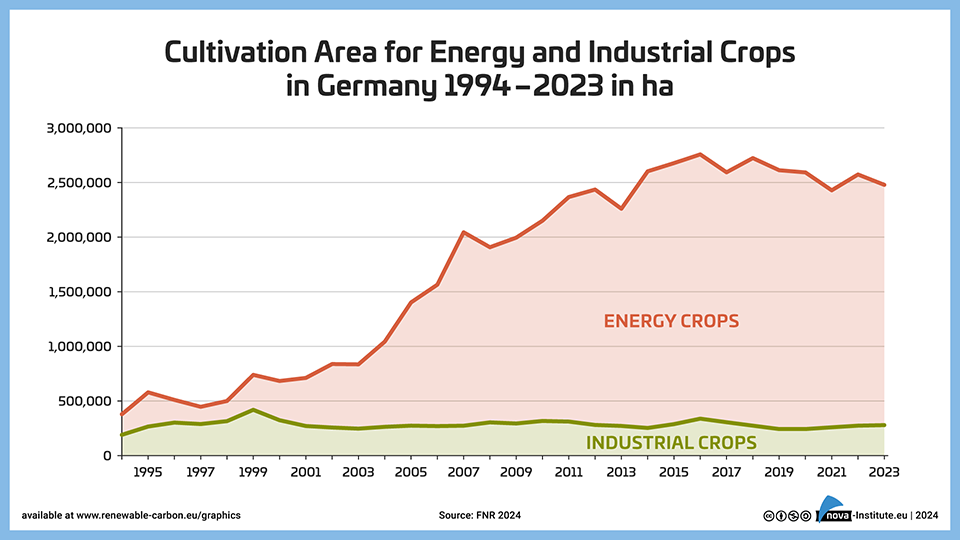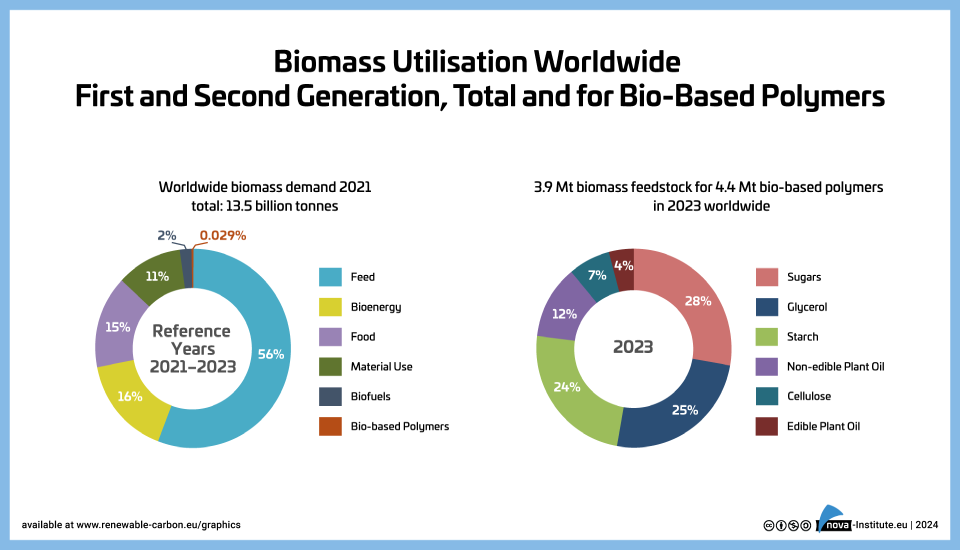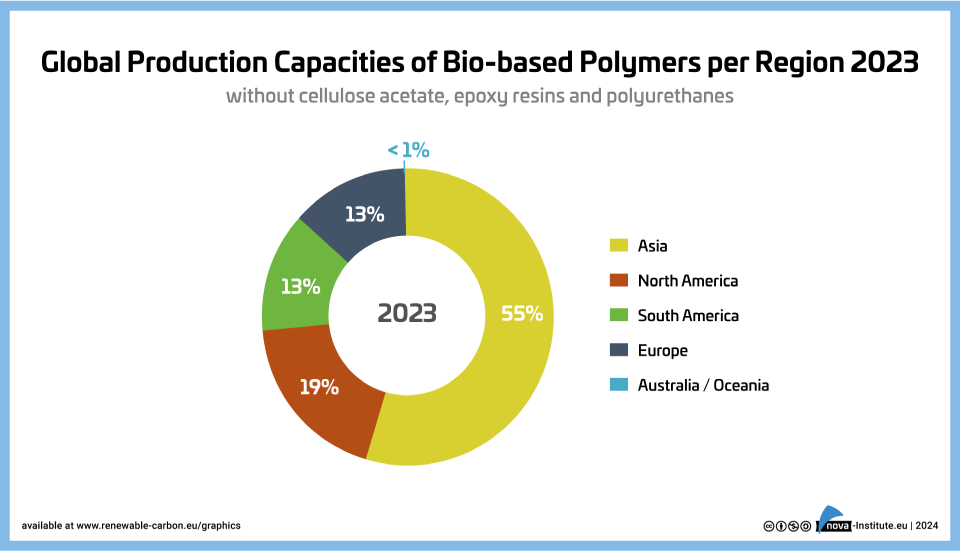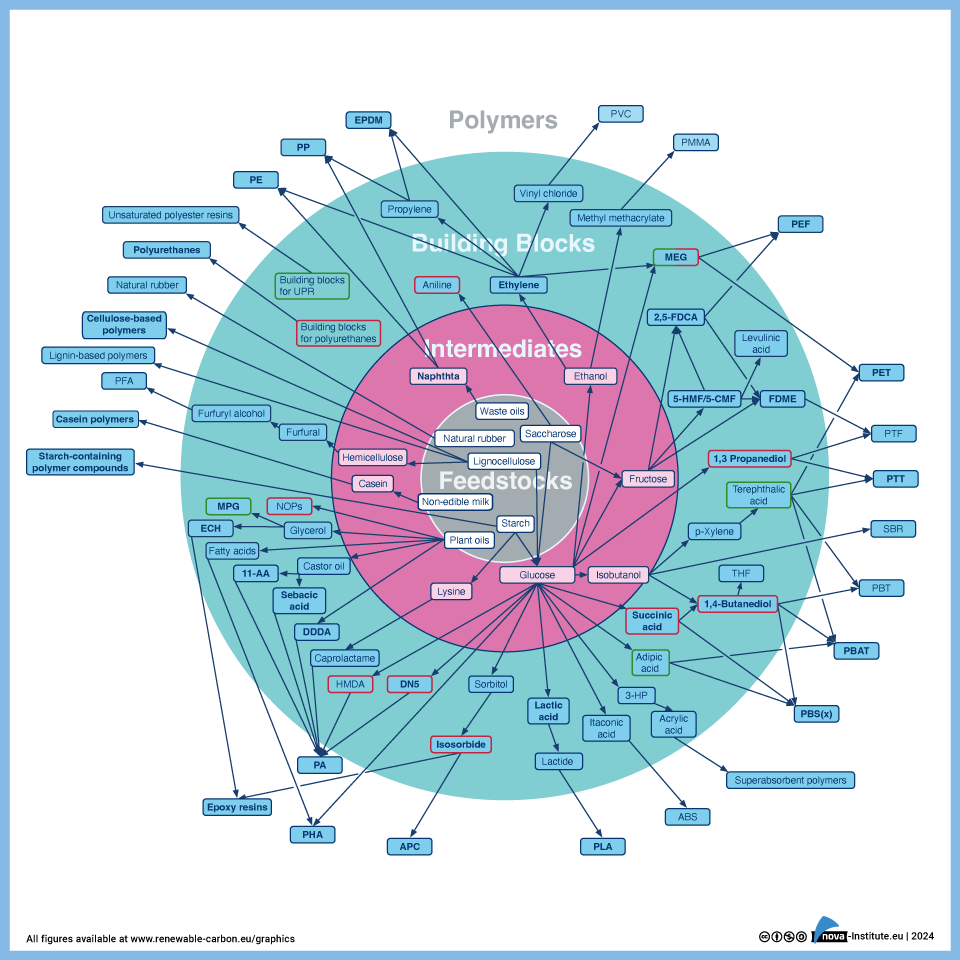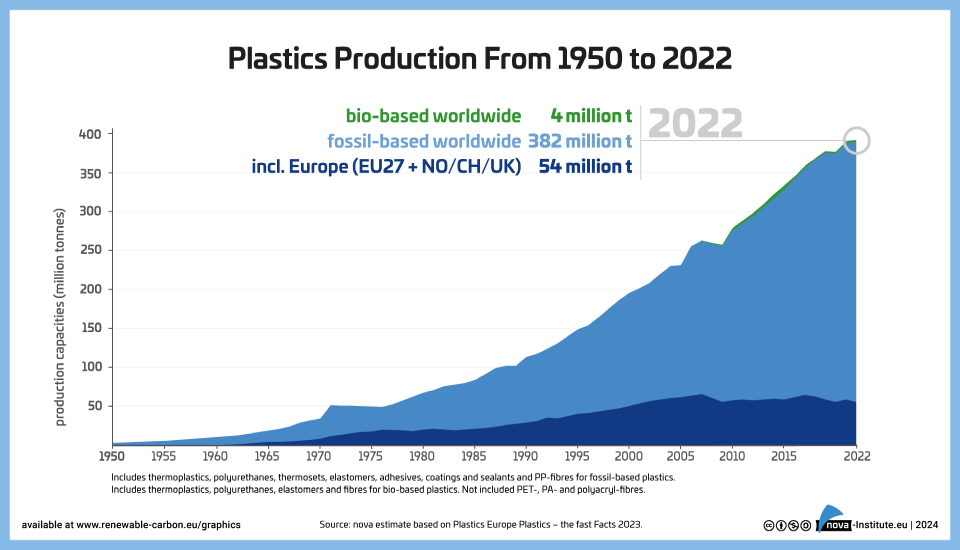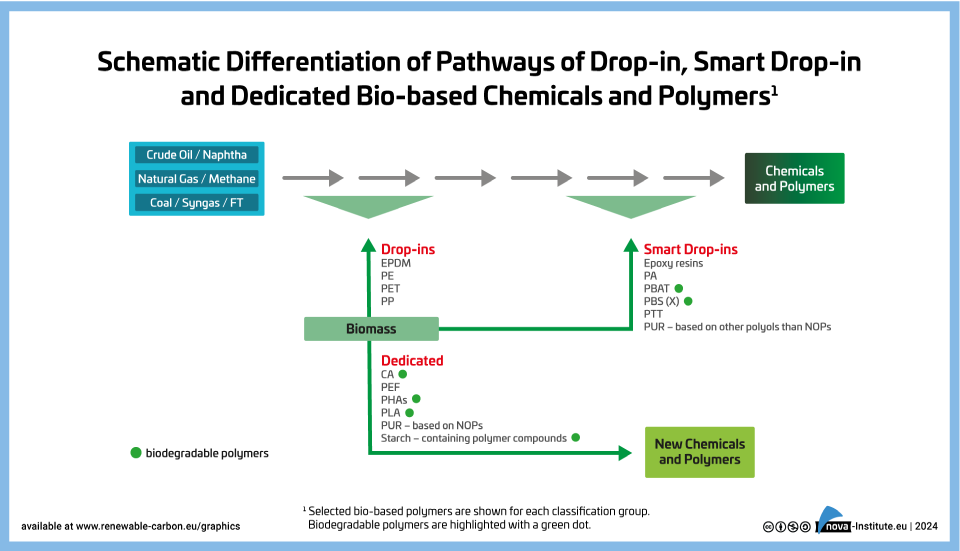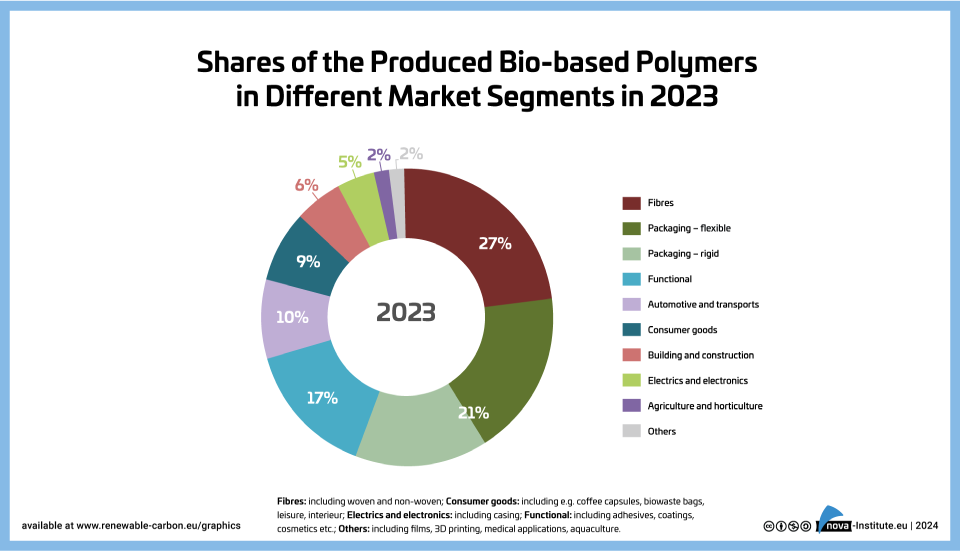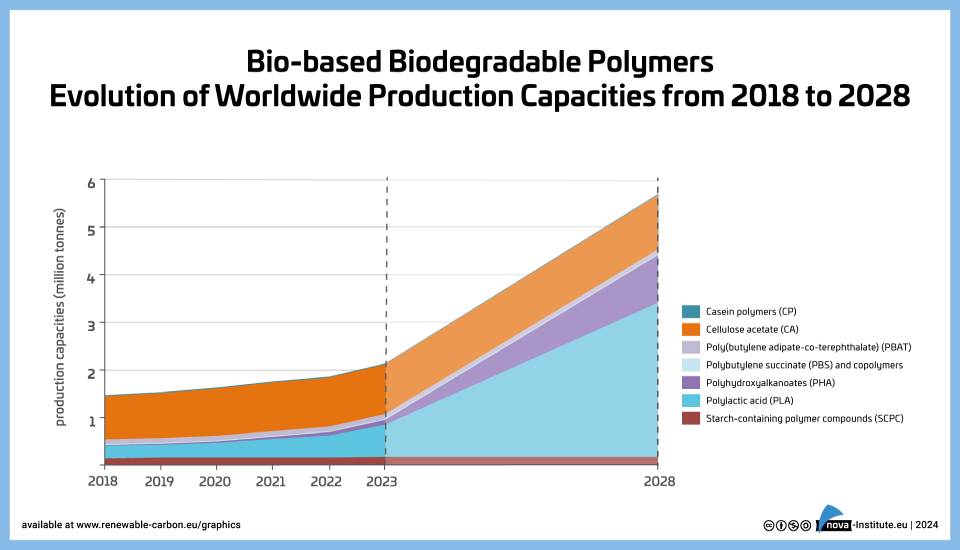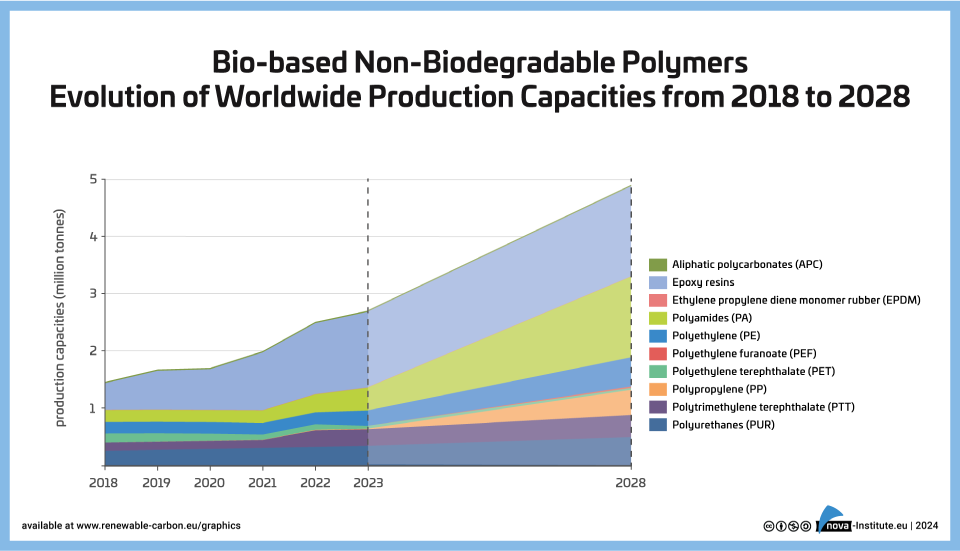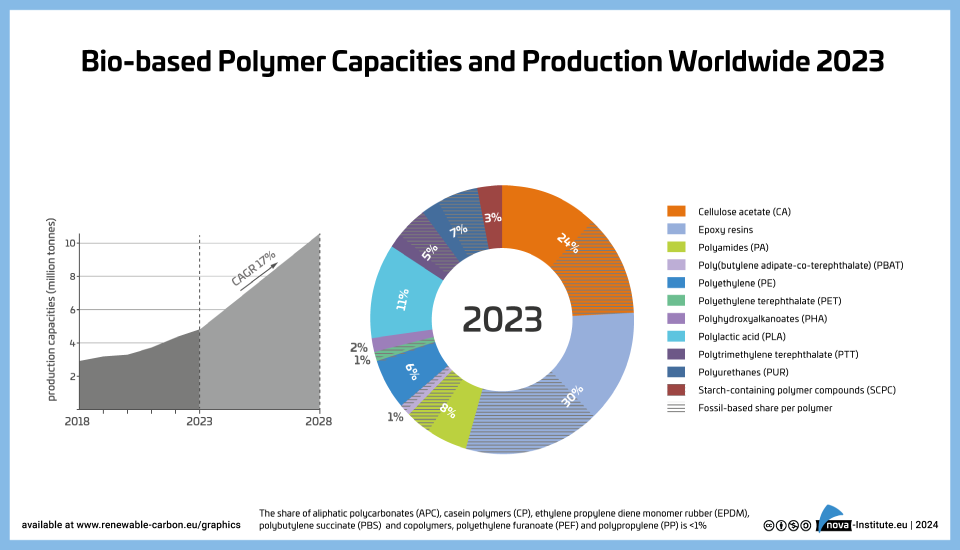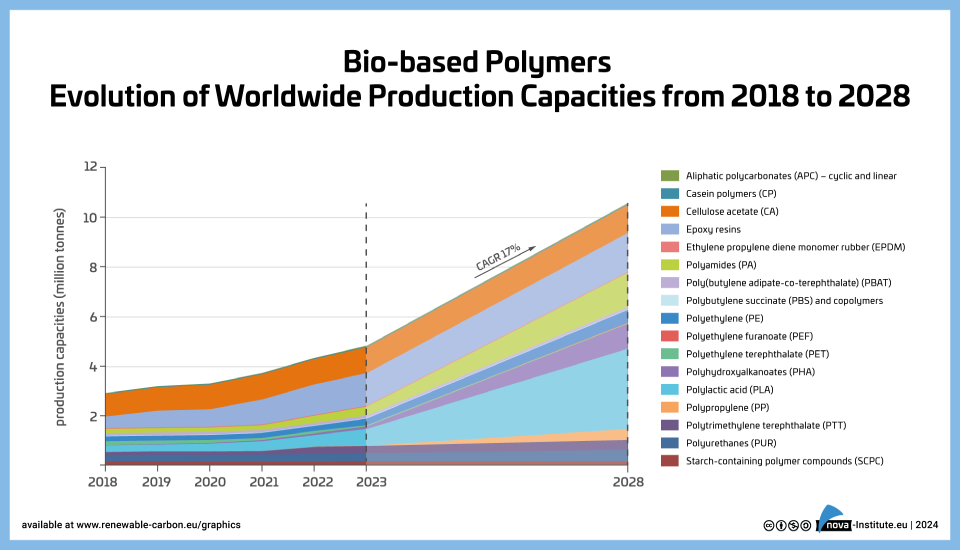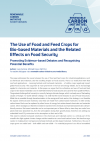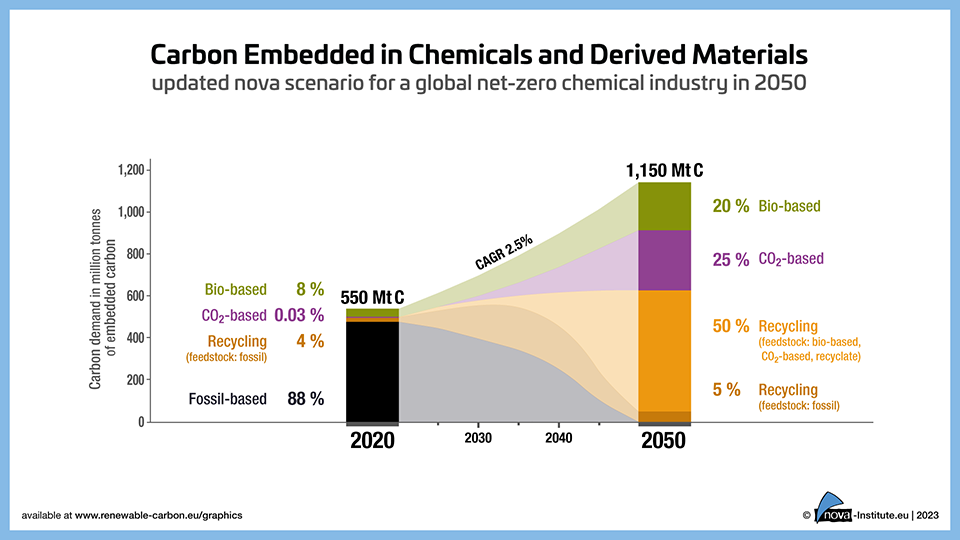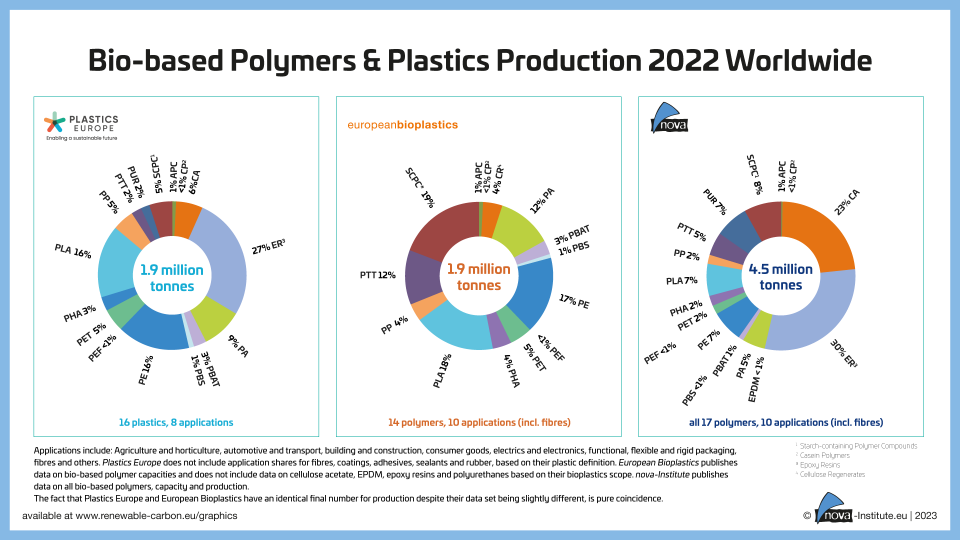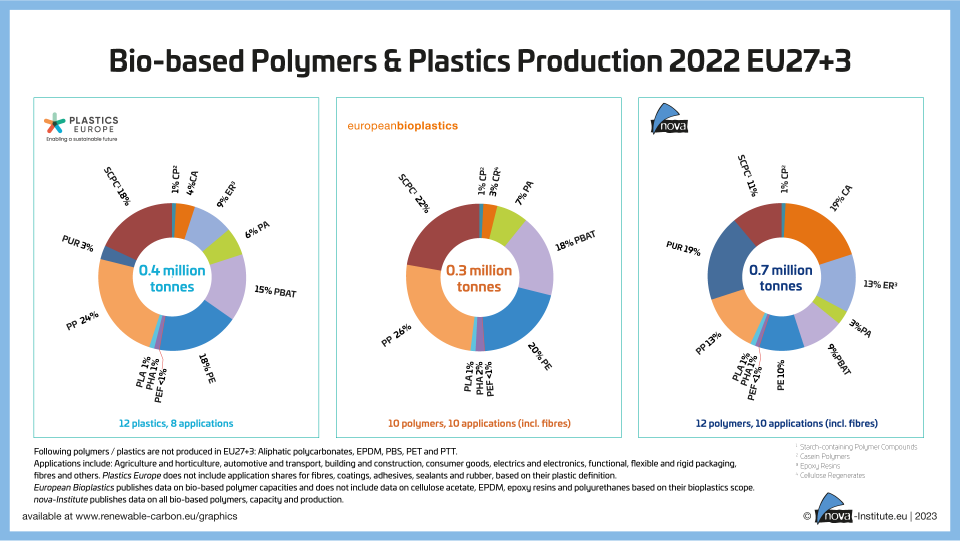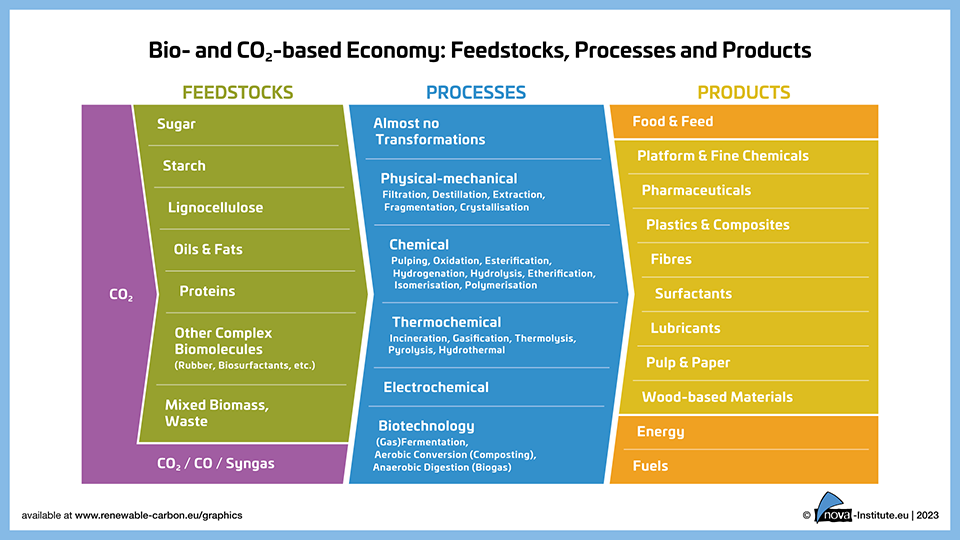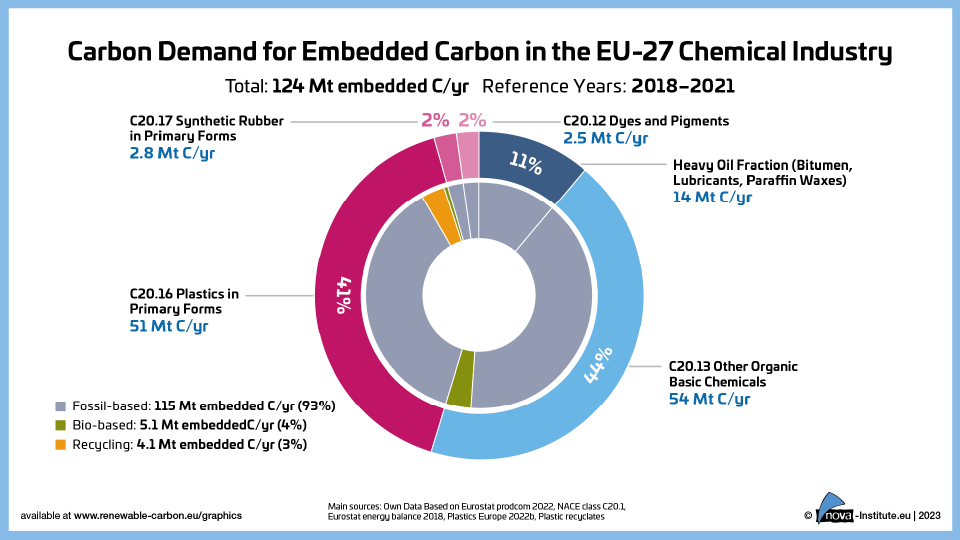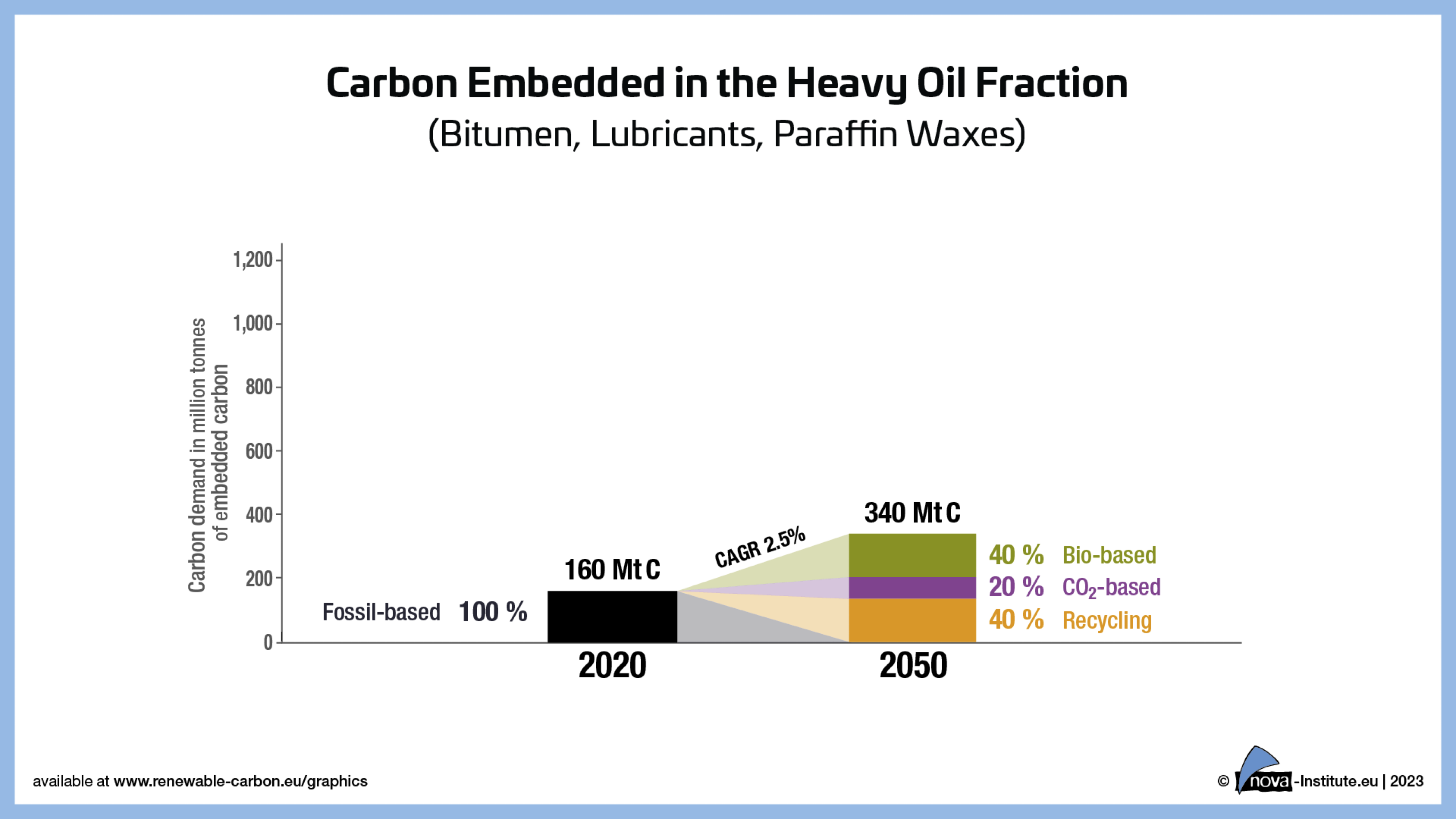Showing 1–20 of 285
-
Bio-based Building Blocks and Polymers – Global Capacities, Production and Trends 2023–2028 – Short Version (PDF)
NewMarkets & Economy
28 Pages
904 Downloads
904 Downloads
2024-03
FREE
904
DownloadsNew report released on the global bio‑based polymer market 2023 – a deep and comprehensive insight into a dynamically growing market
The year 2023 was a promising year for bio‑based polymers: PLA capacities have been increased by almost 50 %, and at the same time polyamide capacities are steadily increasing, as well as epoxy resin production. Capacities for 100 % bio-based PE have been expanded and PE and PP made from bio‑based naphtha are being further established with growing volumes. Current and future expansions for PHAs are still on the horizon. After hinting at a comeback in 2022 bio-based PET production dropped in 2023 by 50 %.
DOI No.: https://doi.org/10.52548/VXTH2416
-
Bio-based Building Blocks and Polymers – Global Capacities, Production and Trends 2023–2028 (PDF)
NewMarkets & Economy
438 Pages

2024-03
3,000 € – 10,000 € ex. tax
Plus 19% MwSt.Select
licenceNew report released on the global bio‑based polymer market 2023 – a deep and comprehensive insight into a dynamically growing market
The year 2023 was a promising year for bio‑based polymers: PLA capacities have been increased by almost 50 %, and at the same time polyamide capacities are steadily increasing, as well as epoxy resin production. Capacities for 100 % bio-based PE have been expanded and PE and PP made from bio‑based naphtha are being further established with growing volumes. Current and future expansions for PHAs are still on the horizon. After hinting at a comeback in 2022 bio-based PET production dropped in 2023 by 50 %.
DOI No.: https://doi.org/10.52548/VXTH2416
-
Cultivation Area for Energy and Industrial Crops in Germany 1994-2023 in ha − Graphic
Markets & Economy
1 Page
430 Downloads
430 Downloads
2024-04
FREE
430
Downloads -
76 Downloads
2024-03
FREE
76
Downloads -
Global Production Capacities of Bio-based Polymers per Region 2022 (PNG)
Markets & Economy
1 Page
44 Downloads
44 Downloads
2024-03
FREE
44
Downloads -
94 Downloads
2024-03
FREE
94
Downloads -
87 Downloads
2024-03
FREE
87
Downloads -
Schematic Differentiation of Pathways of Drop-in, Smart Drop-in and Dedicated Bio-based Chemicals and Polymers (PNG)
Markets & Economy
1 Page
47 Downloads
47 Downloads
2024-03
FREE
47
Downloads -
Shares of Produced bio-based polymers in different market segments (PNG)
Markets & Economy
1 Page
76 Downloads
76 Downloads
2024-03
FREE
76
Downloads -
Bio-based Biodegradable Polymers Worldwide Production Capacities 2018-2028 (PNG)
Markets & Economy
1 Page
77 Downloads
77 Downloads
2024-03
FREE
77
Downloads -
Bio-based Non-Biodegradable Polymers Evolution of Worldwide Production Capacities (PNG)
Markets & Economy
1 Page
42 Downloads
42 Downloads
2024-03
FREE
42
Downloads -
55 Downloads
2024-03
FREE
55
Downloads -
Bio-based Polymers – Evolution of worldwide production capacities from 2018 to 2028 (PNG)
Markets & Economy
1 Page
68 Downloads
68 Downloads
2024-03
FREE
68
Downloads -
RCI’s scientific background report: “The use of food and feed crops for bio-based materials and the related effects on food security – Promoting evidence-based debates and recognising potential benefits” (June 2023) Short Version
Markets & Economy, Policy, Sustainability & Health, Technology
2 Pages
550 Downloads
550 Downloads
2023-11
FREE
550
DownloadsPromoting Evidence-based Debates and Recognising Potential Benefits
This short version of the scientific paper highlights on two pages new insights into a hotly debated topic and urges for careful and evidence-based debates.
The paper aims to show that the well-known biomass debate is flawed, subjective and not fully based on evidence. What is detrimental to food security are, according to the World Food Programme in 2023, climate change, conflict, extreme inequalities in wealth distribution, heavy dependence on food imports from industrial countries, overconsumption of meat, losses along the value chain and the impact of the COVID pandemic. Competition between biomass uses is not mentioned among the relevant causes.
The use of biomass for industrial applications, does have the potential to replace fossil feedstocks and thus contribute to the urgently needed reduction of fossil carbon emissions into our atmosphere to mitigate climate change.
While not denying the dire need to combat world hunger, the authors of the paper argue that using food and feed crops for chemicals and materials will not necessarily exacerbate food insecurity, and in fact has the potential to cause multiple benefits for local and global food security, climate mitigation and other factors:
- The climate wins – Bio-based materials are part of the solution to achieve climate change mitigation.
- Land productivity wins – The competition between applications is not for the type of crop grown, but for the land.
- The environment wins – due to increased resource efficiency and productivity of food and feed crops.
- Farmers win – because they have more options for selling stock to different markets.
- Market stability wins – due to increased global availability of food and feed crops.
- Feed security wins – due to the high value of the protein-rich co-products of food and feed crops.
- Food security wins – due to the increased overall availability of edible crops that can be stored and flexibly distributed.
-
Explorative Scenario – Carbon Embedded in Chemicals and Derived Materials (PNG)
Markets & Economy, Policy
1 Page
514 Downloads
514 Downloads
2023-10
FREE
Free Shipping514
DownloadsFigure from the RCI Carbon Flows Report 2023The nova October 2023 update shows a steady increase in the share of bio-based chemicals from 8% in 2020 to 20% in 2050. CO2-based chemicals require a lot of investment to become relevant after 2030, with strong growth between 2040 and 2050. The recycling of virgin fossil chemicals and plastics dominates the recycling sector until 2035. After 2035, bio-based, CO2-based and recyclates increasingly dominate the recycling sector. -
Bio-based Polymers & Plastics Production 2022 Worldwide (PNG)
Markets & Economy
1 Page
424 Downloads
424 Downloads
2023-10
FREE
424
Downloads -
241 Downloads
2023-10
FREE
241
Downloads -
“Bio- and CO2-based Economy: feedstocks, processes and products” − Graphic – Update
Markets & Economy, Sustainability & Health, Technology
1 Page
3092 Downloads
3092 Downloads
2023-09
FREE
3092
Downloads -
Carbon Demand for Embedded Carbon in the EU-27 Chemical Industry (PNG)
Markets & Economy, Policy
1 Page
92 Downloads
92 Downloads
2023-07
FREE
Free Shipping92
DownloadsFigure from the RCI Carbon Flows Report 2023
-
Explorative Scenario – Carbon Embedded in the Heavy Oil Fraction. (PNG)
Markets & Economy, Policy
1 Page
43 Downloads
43 Downloads
2023-07
FREE
Free Shipping43
DownloadsFigure from the RCI Carbon Flows Report 2023



